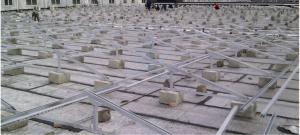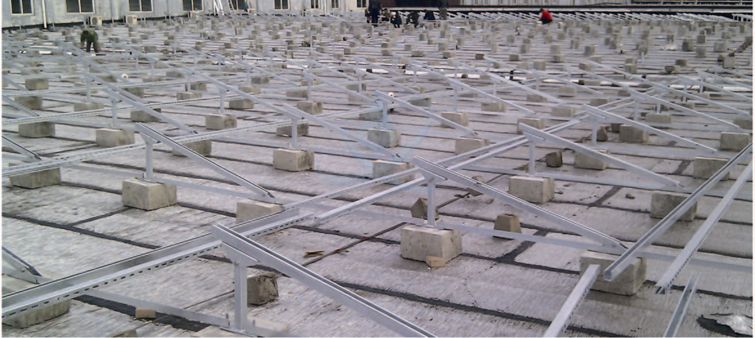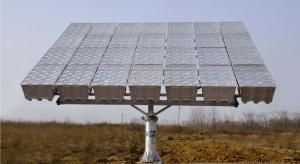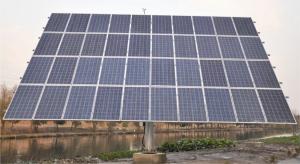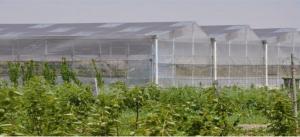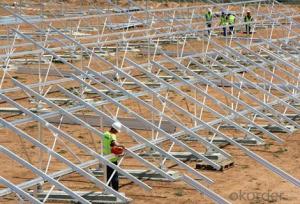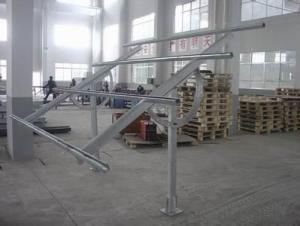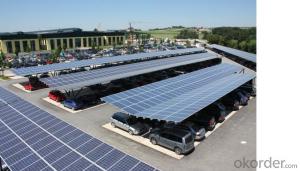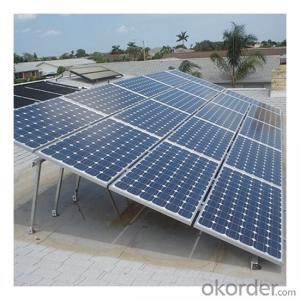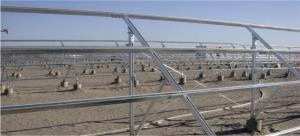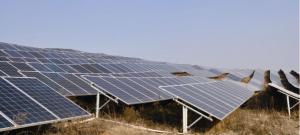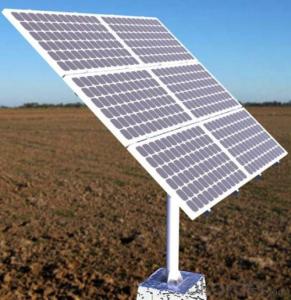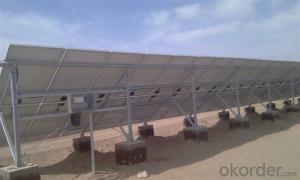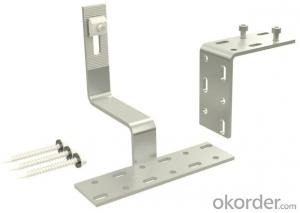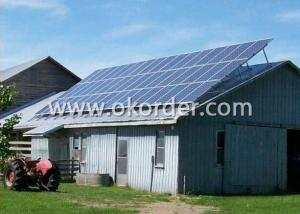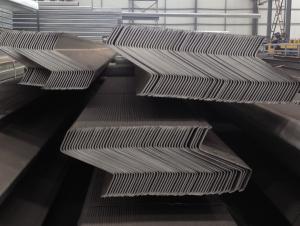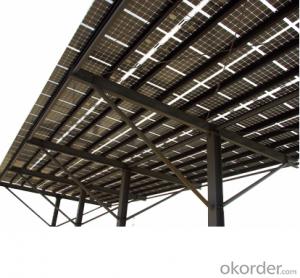Solar-Ready Concrete Roof Support System
- Loading Port:
- Shanghai
- Payment Terms:
- TT OR LC
- Min Order Qty:
- -
- Supply Capability:
- 5MWp watt/month
OKorder Service Pledge
Quality Product, Order Online Tracking, Timely Delivery
OKorder Financial Service
Credit Rating, Credit Services, Credit Purchasing
You Might Also Like
the performance features of the concreted roof support system is simple and grand appearance.exquisite stucture,easy installation.widely applied range .maintenance-free,strong wind-resistance.with the concrete ballast to keep original roof structure.With the concrete ballast to keep original roof structure.
| Installation site | Outdoor ground |
| Installation angle | customization |
| Wind resistance | 35m/s |
| Solar Panel Type | frame or frameless |
| Solar panel size | any size |
| Mount track | aluminum extrusion attachment |
| Mount materials | Q235B |
| Installation height | customization |
| Snow load | 1.4KN/m2 |
| Components arrangement | laterally or longitudinally |
| International Standards | comply with AS/NZS 1170 and other international standards |
| Quality Warranty | 20 years |
- Q: Can a solar mounting system be installed on a sloped roof?
- Yes, a solar mounting system can be installed on a sloped roof. However, the installation process may be slightly more complex compared to a flat roof. The mounting system will need to be designed and installed in a way that accounts for the slope of the roof to ensure proper support and stability for the solar panels. Additionally, the angle of the panels may need to be adjusted to optimize sunlight exposure.
- Q: Can a solar mounting system be installed on a restaurant or food service facility?
- Yes, a solar mounting system can be installed on a restaurant or food service facility. Solar panels can be mounted on rooftops or in open spaces surrounding the facility to harness solar energy and generate electricity. This can help offset the facility's energy consumption and reduce its carbon footprint.
- Q: Can a solar mounting system be adjusted to optimize panel angle?
- Yes, a solar mounting system can be adjusted to optimize panel angle. This allows for the panels to be positioned at the optimal angle for maximum sunlight exposure, thereby increasing the efficiency of the solar system.
- Q: How does a solar mounting system affect the roof's thermal insulation?
- A solar mounting system can have both positive and negative effects on a roof's thermal insulation. On one hand, the solar panels can provide an additional layer of insulation, reducing heat transfer from the sun and potentially improving the roof's energy efficiency. On the other hand, the mounting system may require penetrations or attachments to the roof, which could compromise the integrity of the insulation if not properly installed or sealed. Therefore, it is important to ensure that the solar mounting system is designed and installed correctly to minimize any negative impact on the roof's thermal insulation.
- Q: Are there any specific regulations or permits required for installing a solar mounting system?
- Yes, specific regulations and permits are typically required for installing a solar mounting system. These requirements vary by location, but commonly include obtaining permits for structural engineering, electrical work, and compliance with building codes. It is important to consult with local authorities and professionals to ensure adherence to all necessary regulations and obtain the required permits for a solar mounting system installation.
- Q: Can a solar mounting system be used in areas with seismic activity?
- Yes, a solar mounting system can be used in areas with seismic activity. However, it is essential to design and install the system with appropriate measures to ensure its resilience against seismic forces. This includes using seismic-rated mounting structures, secure foundations, and proper anchoring techniques. By employing these strategies, solar installations can withstand seismic events and continue to operate efficiently and safely.
- Q: Are there any specific requirements for buoyancy when using a solar mounting system for floating solar?
- Yes, there are specific requirements for buoyancy when using a solar mounting system for floating solar. The buoyancy requirements are determined based on factors such as the weight of the solar panels, the depth and type of water body, and the desired stability of the floating solar system. The mounting system should be designed to provide adequate buoyancy to support the weight of the panels and any additional loads, while also ensuring stability and resistance to external forces such as wind and waves.
- Q: Can a solar mounting system be used for solar pergolas or shade structures?
- Yes, a solar mounting system can be used for solar pergolas or shade structures. These systems are designed to securely hold solar panels in place, and they can be adapted to fit various structures, including pergolas or shade structures. By incorporating solar panels into these structures, you can generate clean energy while providing shade or covering for outdoor spaces.
- Q: Can a solar mounting system be used in areas with solar incentives for community centers?
- Yes, a solar mounting system can definitely be used in areas with solar incentives for community centers. In fact, community centers are ideal candidates for installing solar panels due to their large roof spaces and potential for high energy consumption. By utilizing a solar mounting system, community centers can not only take advantage of solar incentives offered by the local government but also reduce their electricity bills and promote sustainability within their community.
- Q: What is the purpose of a solar mounting system?
- The purpose of a solar mounting system is to securely and efficiently support solar panels, allowing them to be properly angled towards the sun for maximum energy production. It provides stability and durability, ensuring the longevity of the solar panel installation and optimizing its performance.
Send your message to us
Solar-Ready Concrete Roof Support System
- Loading Port:
- Shanghai
- Payment Terms:
- TT OR LC
- Min Order Qty:
- -
- Supply Capability:
- 5MWp watt/month
OKorder Service Pledge
Quality Product, Order Online Tracking, Timely Delivery
OKorder Financial Service
Credit Rating, Credit Services, Credit Purchasing
Similar products
Hot products
Hot Searches
Related keywords
